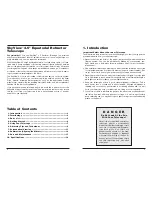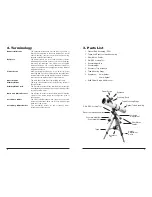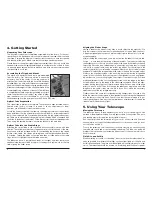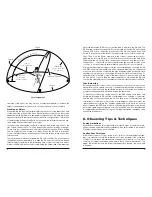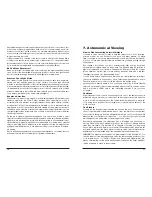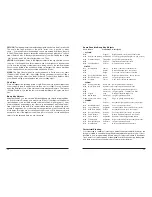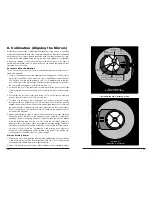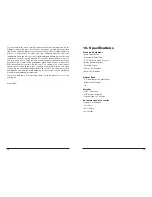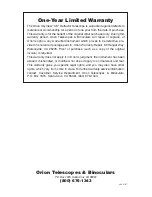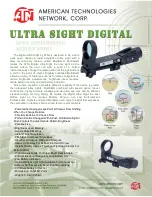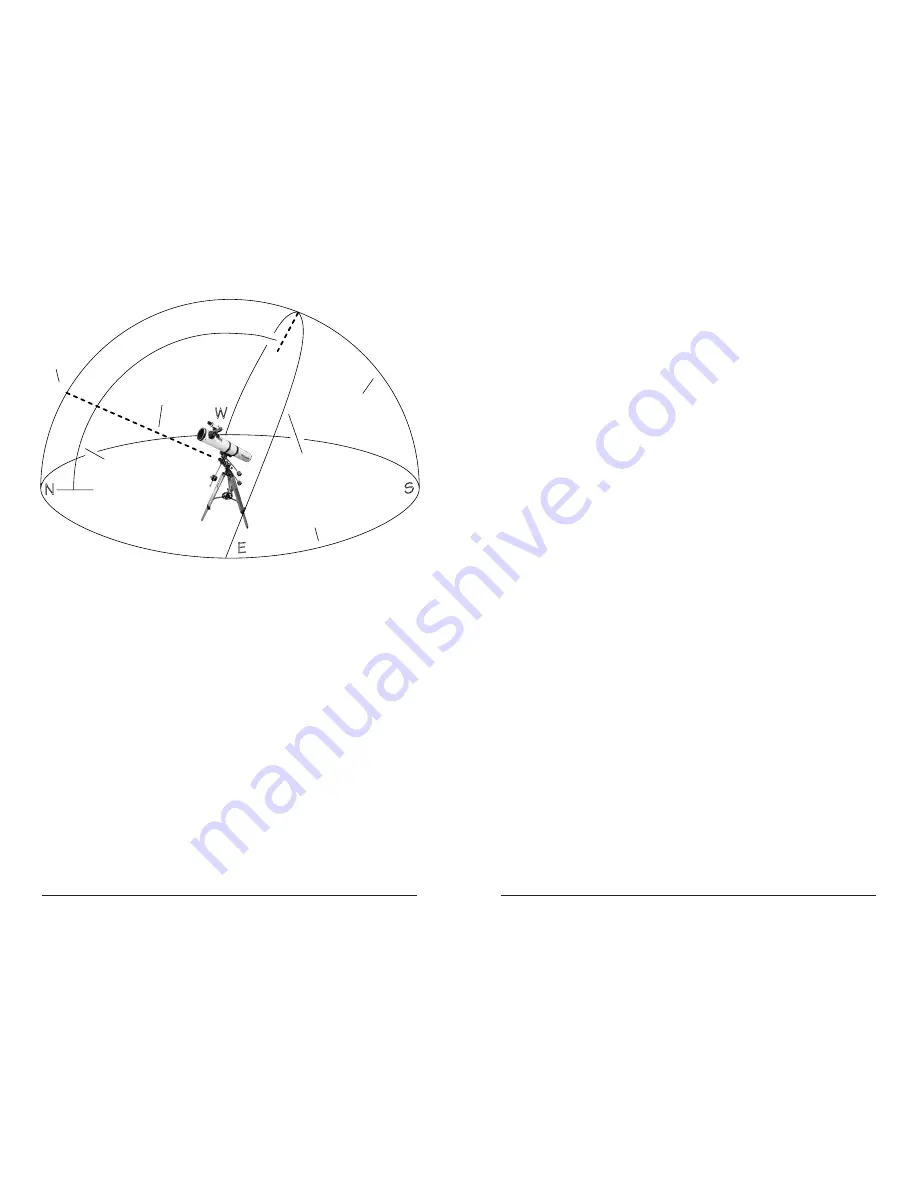
operation of the mount. You may set it on a sturdy level platform to increase the
height of the eyepiece, but be sure it’s strong enough and does not wobble.
tracking an object
When viewing the night sky, celestial objects will drift out of the telescope’s field
of view due to the rotation of the Earth. Equatorial mounts, like the one that comes
standard with the SkyView, are designed to compensate for this problem. When
aligned correctly with the rotational axis of the Earth, the right ascension (RA) axis
of the telescope will match the Earth’s rotation and the celestial objects can eas-
ily be kept within the telescope’s field of view.
In the Northern Hemisphere, the Earth’s rotational axis points very close to the
star Polaris, the North Star. This can be easily be demonstrated by pointing at
Polaris with your index finger, and after several minutes the sky will have rotated
from its original position around your finger. When the RA axis is pointed at
Polaris, the telescope can follow the path of the stars as they rotate around their
rotational axis.
There are several methods of aligning the RA axis to the Earth’s rotational axis;
the quickest and easiest method is to align the RA axis to Polaris. This will keep
celestial objects centered in the telescope’s field of view over time with adjust-
ments to the RA slow motion control cable. Swing the optical tube of the telescope
8
9
about the declination (DEC) axis so that the tube is parallel to the RA axis. The
DEC setting circle should read +90. Move the tripod so that the RA axis roughly
lines up with Polaris. Adjust the latitude (tilt) of the RA axis up and down until
Polaris is in the center of the field of the finder scope, center Polaris in the cross-
hairs. Then, with the 25mm eyepiece in the focuser, repeat the process of
adjusting the tilt of the RA axis so that Polaris is in the center of the field in the
25mm eyepiece. Using the T-knob on the side of the mount, lock down your lati-
tude position . . . this should not have to be adjusted again unless it comes loose
or you go to an observing site several hours North or South of your main site.
Moving the telescope from object to object is accomplished by loosening the RA
and DEC axes locking mechanisms and moving the telescope into the general
area you wish to observe. Lock down the axes by tightening the knobs and locate
the object using the slow motion cables. Moving the tripod is not necessary. To
keep the object in the field of view of the telescope over a period of time, use the
RA slow motion control to keep the object centered. You are moving the RA axis
to follow the sidereal motion of the object around the rotational axis of the Earth.
tube Balancing
Balancing the optical tube to the mount’s two axes of rotation is critical for the
equatorial mount to operate smoothly. If unbalanced, there will be torque put on
one axis of the mount, and the telescope will tend to shift at the most awkward
moment so the heavier end will be lower than the lighter end.
To balance your telescope, set the mount so the DEC setting circle reads +90.
Rotate the telescope in RA until the counterweight is on one side of the mount
and the tube on the other. Leave the RA lock knob loose so the telescope will
rotate freely in the RA axis. Adjust the counterweight so when horizontal, the
telescope does not rotate in RA, and then tighten the RA lock knob. You will now
want to release the DEC axis lock knob and slide the optical tube forwards and
back in the cradle rings until there is no torque in the DEC axis. Now the telescope
is completely balanced and will not move without being touched, regardless of the
axes being locked down.
6. observing tips & techniques
seeing limitations
Atmospheric conditions vary significantly from night to night. If the stars are twin-
kling noticeably, upper atmospheric turbulence may limit viewing to low powers.
Planetary observing may be very limited.
cooling Your telescope
Allow at least one hour for your scope to cool. In very cold climates (below freez-
ing), it is essential to store the telescope as cold as possible. If the scope has
to adjust to more than a 40° temperature change, allow at least two to four hours
to adjust. All optical instruments need time to reach “thermal equilibrium”. The
bigger the instrument and the larger the temperature change, the more time
is needed.
Celestial Equator
Horizon
W
S
N
Zenith
Polaris
Meridian
your North–South
line in the sky
Line up
the Polar Axis
E
➤
➤
➤
➤
➤
✘
★
➤
➤
➤
This angle
is the same
as your latitude
➤
➤
90
ϒ
fro
m p
ole
to eq
uator
ϒ
Polar Alignment


